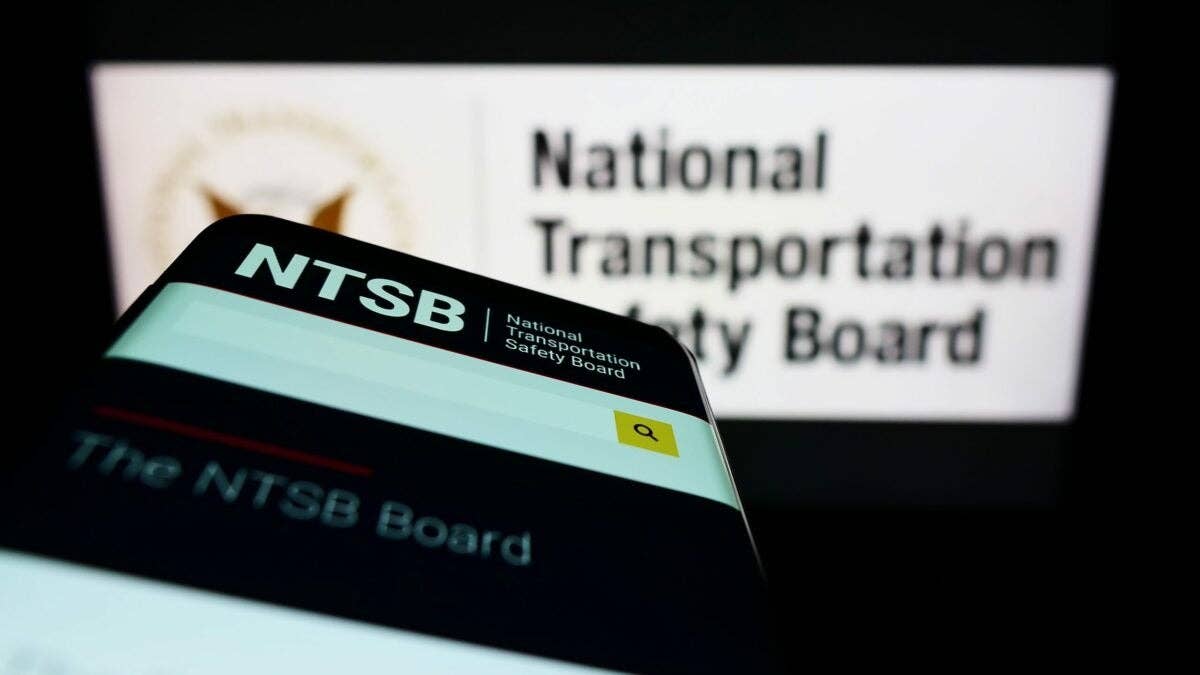Knowing When to Call the NTSB
When things go wrong, it may seem like high drama, but there are rules for notification of aircraft incidents and accidents.

The Federal Aviation Regulations Aeronautical Information Manual outlines rules for notification of aircraft incidents and accidents.
[Credit: Shutterstock]
The private pilot candidate landed long. The airplane rolled to a stop off the end of the pavement, about 10 feet into the grass.
There was no damage or injuries, except for frayed nerves, but as a precaution the school's chief mechanic took a look at the Cessna 150. Mostly it was done to show the learner that part of being a pilot was being responsible. If you have an unintentional off-runway experience, you have a mechanic inspect the airplane as a precaution. The CFI didn't think there was any damage as there hadn't been a prop strike. The chief mechanic confirmed this.
It became a teaching moment for the rest of us CFIs. One of the instructors insisted that the FAA and the National Transportation Safety Board (NTSB) had to be notified. He then went into a story about "a buddy of his" who had a similar experience and found himself in a great deal of trouble because he didn't call. There was a group eye roll. Then the Federal Aviation Regulations Aeronautical Information Manual (FAR/AIM) was brought out, and the learners instructed to look up Part 830, which provides guidance on when you need to notify the NTSB and, if need be, the FAA.
When to Call the NTSB
Although going off the runway may seem like high drama when it happens to you, it likely falls under the category of an incident, not an accident, per the definition found in Part 830 of the FAR/AIM.
According to the definition, aircraft accidents are specifically defined as events that involve a fatality, serious injury, or substantial damage to the aircraft and require NTSB notification.
NTSB 830.5 states that notification must happen if there is damage to property, other than the aircraft, estimated to exceed $25,000 for repair (including materials and labor) or fair market value in the event of total loss, whichever is less. Ding up the wheel pants on the clapped-out, older-than-you-by-20-years Cessna 172, no notification. If the airplane collides with aircraft on the ramp or totals the Lexus sedan parked on the ramp, a call to the NTSB will be in your future.
With the exception of removing wreckage to rescue people or preserve it from further damage, NTSB 830.10 tells us to preserve the wreckage, stating, "the operator of an aircraft involved in an accident or incident for which notification must be given is responsible for preserving to the extent possible any aircraft wreckage, cargo, and mail aboard the aircraft, and all records, including all recording mediums of flight, maintenance, and voice recorders, pertaining to the operation and maintenance of the aircraft and to the airmen until the Board takes custody thereof or a release is granted pursuant to § 831.12(b)."
- READ MORE: Always Look for a Place to Land
Basically, the accident is treated like a crime scene, and evidence should not be disturbed if possible. If not, the original position should be documented. Pictures taken with a smartphone usually suffice.
If the aircraft has sustained substantial damage, and it is obvious it can't fly, the NTSB asks to be notified. This is when we get into the gray area of "do we need to notify the FAA?" If there are no injuries and only damage to the airplane, probably not.
If you are at a towered airport, the tower operator may notify the FAA, depending on the situation.
The pilot of a freshly restored Stearman learned about this the hard way when he had a wingtip strike during a ground loop. As he taxied his aircraft with a crumpled lower wingtip off the runway, the tower controller asked what happened. The pilot, angry with himself, replied he had his head in anatomically infeasible location. He was understandably upset. It was the Fourth of July, and he had been planning to give rides to people in his plane during a hangar picnic.
- READ MORE: Make Flight Reviews for CFIs Worthwhile
About an half hour later, the airport manager showed up to warn the pilot that the tower operator had notified the FAA, and a sheriff deputy was on his way to take a look at the airplane. None of us had heard of this before. The deputy was not a pilot and told us that he had been called by the FAA. He wasn't sure why he was there, except that he was asked by the FAA to look at the airplane and talk to the pilot.
The owner of the aircraft, much calmer now, explained he was upset because he had damaged his beautiful airplane, and he regretted being terse with the controller. Fortunately the deputy understood and that was the end of it, with the exception of the aircraft owner ripping off a piece of the torn fabric of the lower wing and giving it to me with the instructions, "Tell your students to pay attention, or bad things can happen!"
I still have that piece of fabric.

Sign-up for newsletters & special offers!
Get the latest FLYING stories & special offers delivered directly to your inbox






